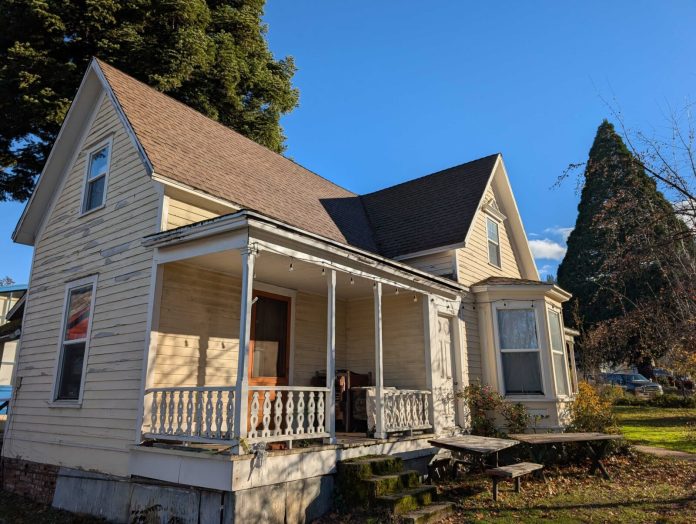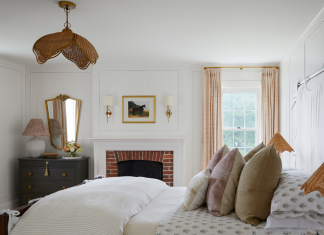For more than a quarter century, the fate of the county-owned Hall-Lawry home, at the corner of Jackson and Bradley streets in Quincy, has remained in limbo. The site has at various times been earmarked for a library expansion, a parking lot and a planning department or museum annex. Today there’s a new vision: public bathrooms, and, maybe someday, a visitor’s center.
The Halls and the Lawrys
The Hall-Lawry home is situated on a large corner lot at 60 Bradley St., opposite the Plumas County Courthouse. Built in 1875, it is among the oldest surviving structures in town. The home was constructed by Hugh Porter for his daughter Nellie Hall and her husband Andrew. Porter, a carpenter, cabinet maker and longboard maker, embellished the house with decorative flourishes such as steamed wood arches, elaborate railings and banisters and built-in cupboards using many different types of wood. A small orchard was added in 1876. The last gnarled apple tree fell earlier this year.


The house “typifies the Plumas County style of the 1860s and 1870s,” wrote Paul Russell, director of the Plumas County Museum, in an email to The Plumas Sun. “Although a few changes have been made to the exterior over the years, the ship-lap siding can still be found underneath the exterior, and the interior is much the same as it was when built. All the original cabinetry produced by Porter is intact, as is the large steamed-and-bent archway between the living room and parlor.”
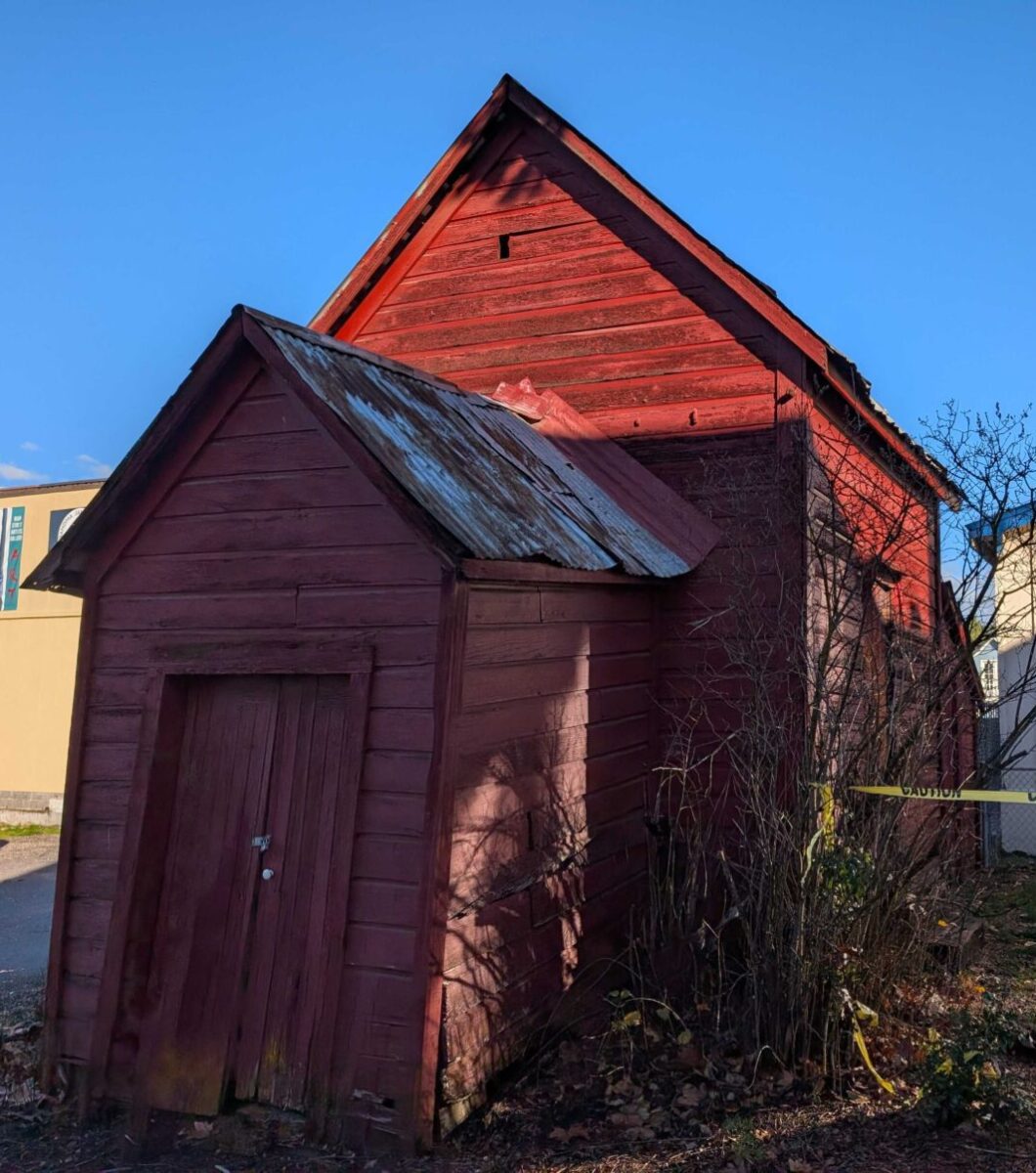
Also on the property is an ice house and root cellar that may predate the home itself, said Scott Lawson, former museum director. An 1860s restaurant, which Helen Lawry described as an oyster parlor, once stood on what is now Grover Alley. The freestanding red structure was likely built for that business. Its walls are filled with sawdust insulation, allowing for cold storage. Among its unique features are street-level glass windows. There are few such buildings left in the county, Lawson said.
The house also has ties to early county history. Andrew Hall, known as Doc Hall for his work as a veterinarian, participated in the construction alongside his father-in-law. Hall had traveled to the West from Maine as a teenager and enjoyed a long and varied career that included saloon owner, professional gambler, journalist and sheriff. Doc was the founder of the Capital Saloon, opened in 1873, and was responsible for installing the locally famous back bar. After temporarily relocating to Portland, Oregon, where they founded another bar, the Halls returned to their home in Quincy in 1892. This time Doc Hall started a different type of business: the Plumas Independent newspaper, located in the former restaurant space next door to the Hall home. Doc Hall and his son Arthur ran the Independent until it was sold to the Feather River Bulletin in 1945. The building was demolished in 1973 to allow for widening Grover Alley.
The museum houses early printing blocks, letterhead impressions and other artifacts from the Independent. Recent work on the site has uncovered “pieces of lead printing plates (or slugs), which were used to print articles in 1914, 1916 and 1922,” wrote Russel. These apparently slipped through the cracks in the office’s floor and were buried over time. Such plates were usually broken up and remelted to use in making printing plates for future editions.
The house remained in the Hall family for three generations. Arthur Hall lived there with his wife Verbenia. The couple had four children: two daughters, and two sons who died in infancy. In memory of their lost sons, the couple planted white lilacs that lined the northern property line, their grandson Robert Lawry told The Sacramento Bee in 1998. The couple also planted roses from Maine, which Luther Burbank collected while working to develop his American Beauty rose, Lawry said.
Their daughter Helen Hall and her husband George Lawry were the last to occupy the home. After her husband’s death, Helen Lawry entered into an agreement with Plumas County to sell the property in exchange for a life estate, which allowed her to remain there until her death. When the agreement was completed in 1972, the county planned to use the property for the public library. The current Plumas County Library building abuts the Lawry house property on the east side, and the family previously owned the library property as well. But somewhat to everyone’s surprise, Helen Lawry lived another 28 years, passing away in May 2001 at the age of 94.


A quarter century of uncertainty
By the time the Hall-Lawry home became available to the county, nearly 30 years had passed since its purchase. Earlier plans had fallen by the wayside. Both the Plumas County Planning Department and the museum requested use of the space. It was even considered for a parking lot. But a larger movement to protect the area’s remaining historic structures helped to preserve it.
In the late 1990s, several older downtown homes were at risk. Community members stepped in with a vigorous 1997 letter-writing campaign advocating for the preservation of historic homes. Out of that event the Committee for Historic Integrity, also nicknamed the Plumas County House Huggers, was born in 1998. And on Oct. 7, 2003, the Plumas County Board of Supervisors passed amendments to the general plan that designated three Quincy homes historical buildings: the Lawry house, the 1878 Variel home adjacent to the museum, and the 1901 Queen Anne known as the Anna Clinch Berg home.
While the Variel and Berg homes underwent careful restoration, the fate of Lawry property was less clear. Lawson received permission from the board of supervisors to use the building until a better use for it arose. Museum staff, volunteers and board members devoted hundreds of hours to restoring and maintaining the property, including reroofing, repainting and groundskeeping. The building department hired a local electrician to update the wiring. The interior rooms gradually filled with files, dress forms, clothing and artifacts. The complete Plumas County court archives — over 4,500 files in the care of the museum — are stored there, and the large yard is one of the sites for fourth grade Living History Days. But the house itself wasn’t in any shape for public use, Lawson said. Among concerns were Americans with Disabilities Act compliance and a “substandard” stairway.


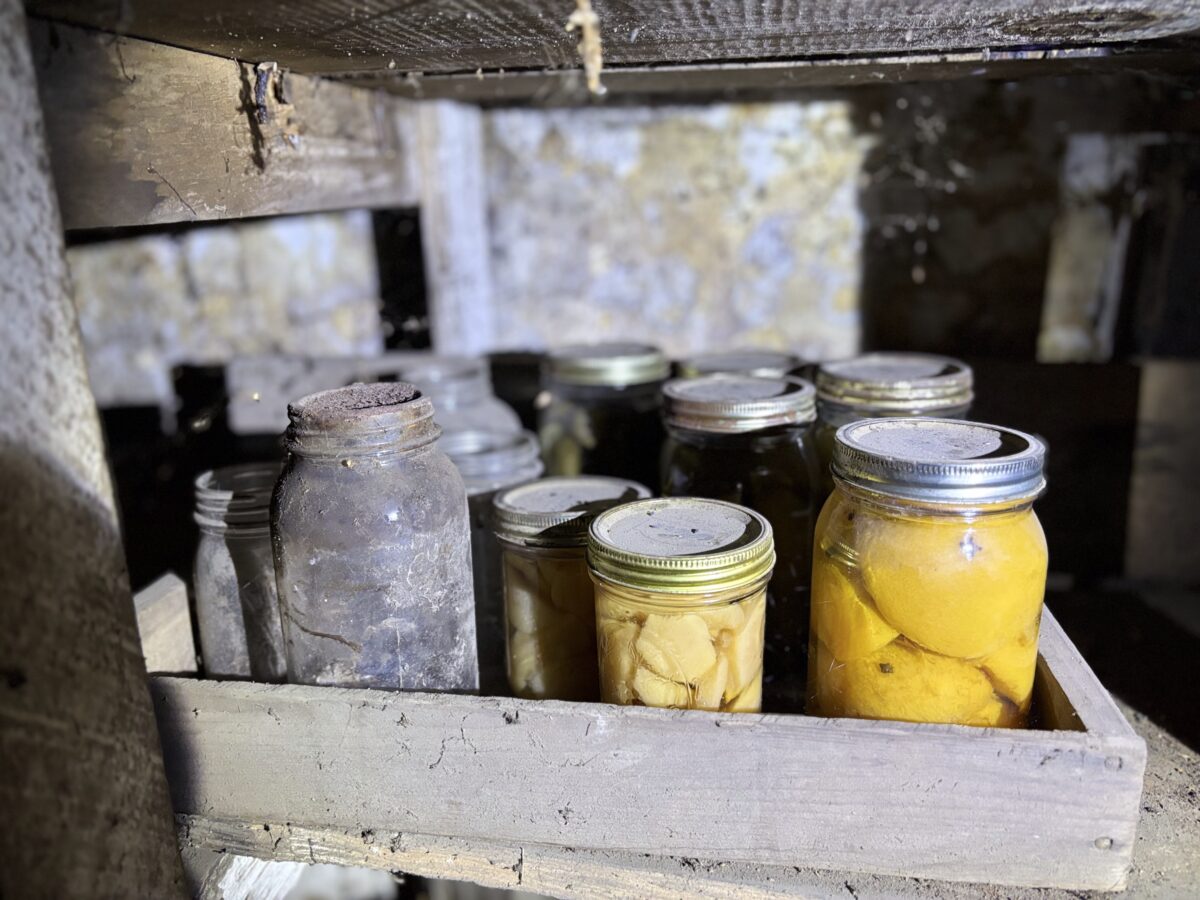

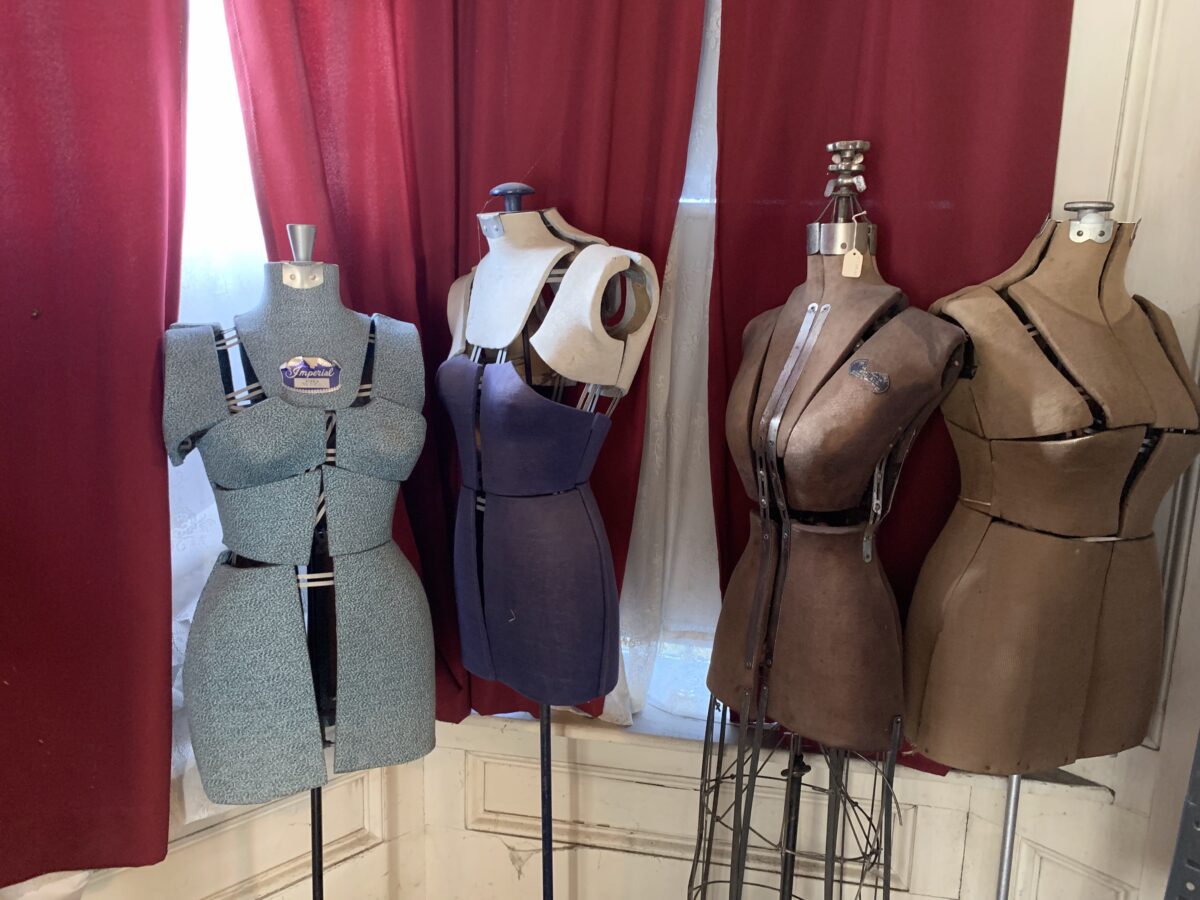
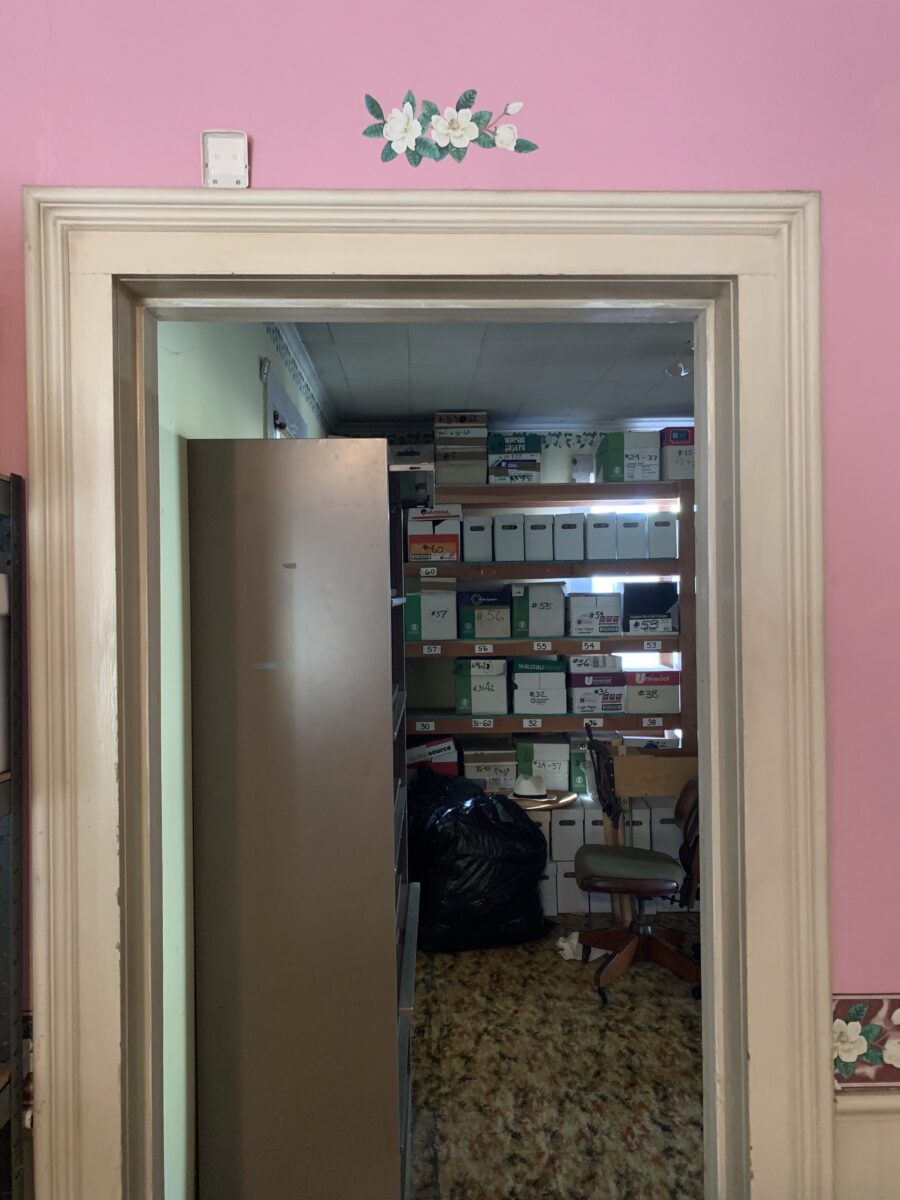
New life?
In autumn 2022, a new Lawry House Project Committee was formed with the aim of restoring the house and putting it to public use. One of their first goals: an ADA-compliant public restroom. Establishing a “visitor center with public restrooms” had been identified as one of the goals of the Recreation Economy for Rural Communities project earlier that year.
“If you are from out of town and come into Quincy you have to search far and wide for a restroom,” said John Kolb, chairman of the LHPC. That limits the amount of time — and dollars — visitors spend in the area.
After assessing the interior dimensions of the home, the committee determined that building a separate restroom structure right outside the house would be the simplest solution. With that in mind, they applied for and won two grants: a $1,500 seed grant from Bread for the Journey in spring 2023, and a $10,000 American Rescue Plan Act grant later that year, said committee member Suzanne Stirling. That was enough to finance first steps, including refreshments for the volunteer cleanup crew Labor of Love, who performed outdoor maintenance on the property and, later, costs related to the demolition of a midcentury garage.
Today, the public restroom is 95% planned, Kolb said. Now, it’s a matter of securing dedicated funding. The estimated cost is between $350,000 and $450,000, Kolb said.
Meanwhile, the opening of the Quincy Hub just around the corner on Main Street has provided a short-term solution to the bathroom quandary. But, said Kolb, a public restroom on public property is still needed. The Lawry site is a good option; Dame Shirley Plaza could be another. If Dame Shirley is to be a public park, said Kolb, “then some amenities need to be made available to the public, such as restrooms.”
Looking further ahead, the LHPC would like to see a more complete restoration of the property. The space might be used for a visitor center, museum exhibit space or meeting and event space, suggested Stirling. The lot might be relandscaped and used as a park, or rented for wedding receptions and other events. But extensive renovations, including lifting the house and installing a new foundation, and bringing all the utilities up to code, would be needed before any of that could happen, said Kolb.
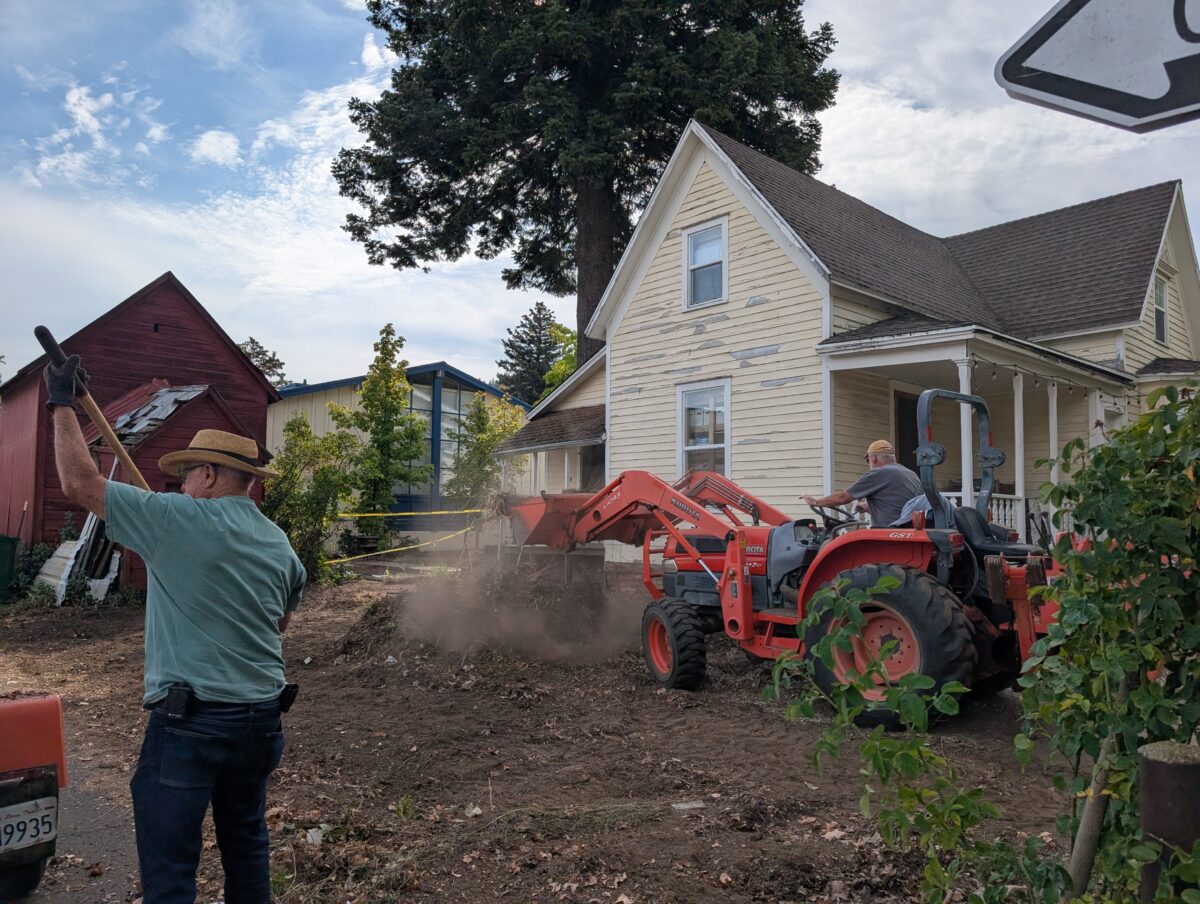

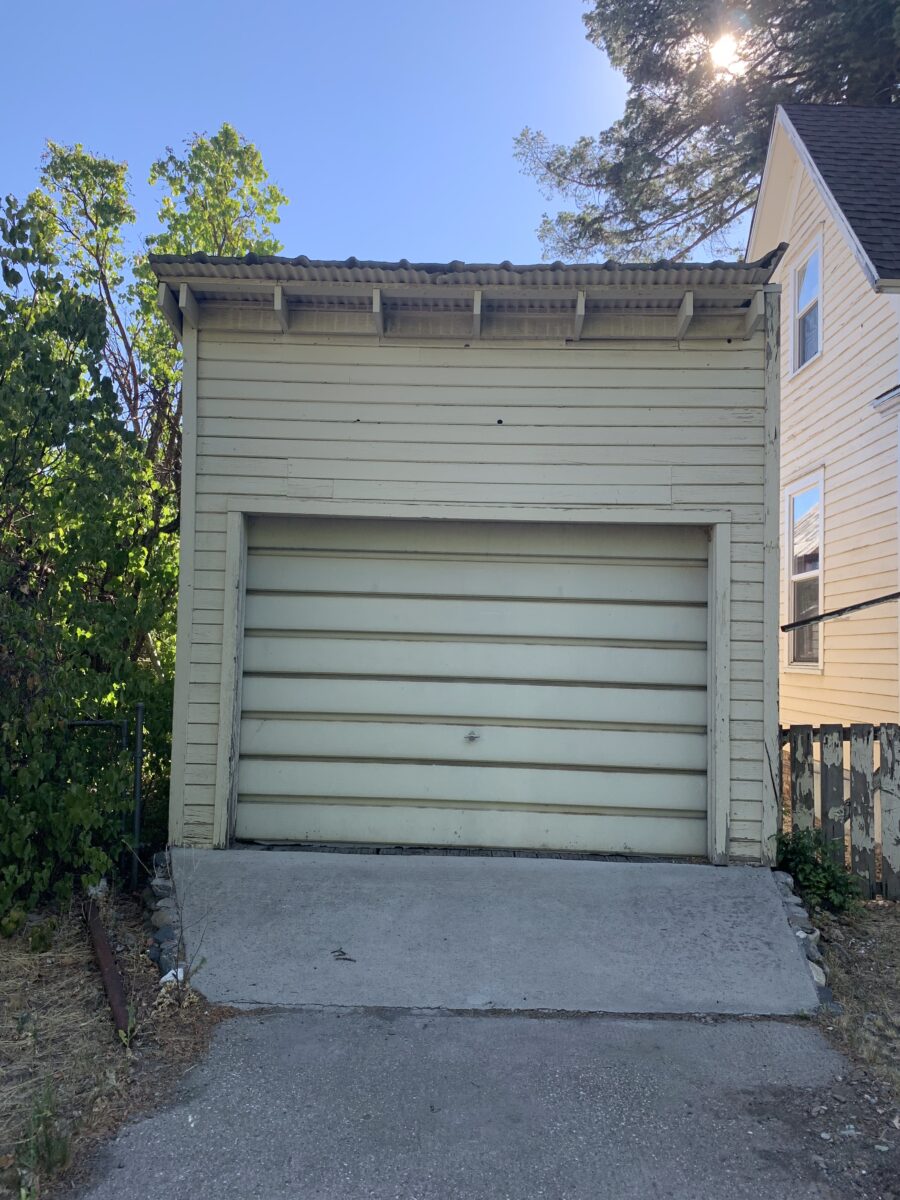
In August 2024, the Plumas County Museum Association entered into a 20-year lease of the Lawry property with the aim of renovating the building and yard “to a condition suitable for use as a community and visitor’s center, or such other nonprofit community benefit use as tenant and owner determine to be appropriate under circumstances then existing,” according to the lease agreement.
Helen Lawry’s mother, Verbenia Hall, is remembered as a local history enthusiast and supporter of the preservation of Plumas County history and artifacts, according to her obituary. Perhaps she would have appreciated the LHPC vision.
Not everyone does. At the Plumas County Board of Supervisors meeting Nov. 4, the question of the Lawry house arose during a discussion about the Plumas County Tourism District. In letters read into the record during the public comment section, one member of the public called the plan to create a visitor’s center there “insane.” Another commenter suggested selling the house and giving the proceeds directly to tourism organizations, or to tourist designations such as the Quincy Hub and Plumas Arts.
Lawson agreed that selling the property — with restrictions on the deed to preserve the historical integrity of the exterior, of course — could be a valid option. “It’s an old residence, and that’s really what it should still be,” he said. But, he added, “the museum should be the first on the list” if there are any assets to be liquidated.
Editor’s note: The date of the house’s construction was corrected. It was previously listed as 1876.



